Subtotal: £8.71
Black Ballon Molly Mix Male and Female 3Cm Poecilia Latipinna, Easy Care Fish That Thrive in Groups, Perfect for Adding Color and Life to Your Aquarium Environment
£5.99 Original price was: £5.99.£4.84Current price is: £4.84.
Welcome these beautiful Black Ballon Molly fish (Poecilia Latipinna) into your aquarium. With their stunning colors and graceful movements, they thrive in community tanks. Perfect for beginner fishkeepers, they bring joy and vibrancy to your aquatic environment. Discover their peaceful nature and compatibility today.
992 in stock
Species Introduction
The Black Ballon Molly, scientifically known as Poecilia latipinna, is a captivating freshwater fish that belongs to the Poeciliidae family. Originating from the warm waters of North America, particularly in areas like the Gulf Coast of the United States and parts of Mexico, these fish thrive in a variety of environments, including brackish waters. Black Ballon Mollies are particularly recognized for their unique balloon-shaped bodies, which are a result of selective breeding. This distinctive shape, combined with their striking black coloration, makes them a popular choice among aquarium enthusiasts. They typically reach a maximum length of around 10 cm, making them suitable for a range of aquarium sizes. Their peaceful demeanor and vibrant appearance make them ideal for community tanks, where they can coexist harmoniously with other species.
Essential Care Guide for Your Black Ballon Molly Mix Male and Female 3Cm Poecilia Latipinna
| Optimal Living Conditions | |
|---|---|
| Water Temperature | 24-27°C (75-81°F) |
| pH Level | 6.5-7.5 |
| Water Hardness | 4-12 dKH |
| Minimum Tank Size | 80L (20 gal) |
| Salinity | Freshwater |
| Care Level | Beginner Friendly |
Care Requirements Dashboard
✓ Care Level: Easy
Tank Size: Minimum 75 liters (20 gallons)
Water Temperature: 24-28°C (75-82°F)
pH Level: 7.0-8.5
Hardness: 10-30 dGH
The Black Ballon Molly is considered an easy fish to care for, making it an excellent choice for beginners. They require a minimum tank size of 75 liters (20 gallons) to provide ample swimming space and to maintain stable water parameters. Maintaining a water temperature between 24-28°C (75-82°F) is essential for their health and well-being. The pH level should ideally be between 7.0 and 8.5, with a hardness range of 10-30 dGH. Regular water changes and a reliable aquarium filter are crucial to keep their environment clean and healthy.
Natural Behavior & Temperament
Black Ballon Mollies are known for their friendly and peaceful temperament, making them ideal for community tanks. They exhibit a range of natural behaviors, including social interactions with their tank mates and a tendency to swim in groups. These fish are active swimmers, often seen exploring their environment and foraging for food. Their social nature means they thrive in the company of other fish, and they are generally non-aggressive, which allows them to coexist with a variety of species. However, it is important to avoid keeping them with overly aggressive fish, as this can lead to stress and health issues. Observing their behavior can be quite rewarding, as they display a variety of playful interactions and social dynamics, especially when kept in groups.
Tank Setup Guide
Creating an ideal environment for your Black Ballon Mollies involves careful consideration of tank setup. Start with a spacious aquarium that allows for swimming and exploration. The substrate can be fine gravel or sand, which mimics their natural habitat and provides a comfortable surface for them to rest on. Incorporating live plants not only enhances the aesthetic appeal of the tank but also offers hiding spots and territories for the fish. Plants such as Java Fern, Anubias, and Vallisneria are excellent choices, as they thrive in a range of water conditions and provide cover. Additionally, adding decorations like driftwood and rocks can create interesting landscapes and promote natural behaviors. Ensure that the tank is equipped with a quality filtration system to maintain water clarity and quality, as Black Ballon Mollies are sensitive to poor water conditions.
Water Quality Management
Maintaining optimal water quality is crucial for the health of Black Ballon Mollies. Regular testing of water parameters is essential to ensure a stable environment. The pH level should be kept between 7.0 and 8.5, as fluctuations can lead to stress and health issues. Temperature control is also vital; aim for a range of 24-28°C (75-82°F) to mimic their natural habitat. Hardness levels should be maintained between 10-30 dGH, as this range supports their overall health. Regular water changes of 10-15% weekly will help remove toxins and replenish essential minerals. Additionally, using a high-quality aquarium filter will assist in maintaining water clarity and quality. Keep an eye out for signs of poor water quality, such as unusual behavior or visible health issues, and take immediate action if any problems arise.
Feeding & Nutrition
✓ Diet: Omnivorous
Feeding Schedule: 2-3 times daily
Food Types: Flakes, pellets, frozen, and live food
Black Ballon Mollies are omnivorous and thrive on a varied diet. A balanced diet will promote their health, vibrant colors, and overall well-being. High-quality flake or pellet food should form the basis of their diet, supplemented with occasional feedings of frozen or live foods such as brine shrimp, daphnia, and bloodworms. It is important to feed them 2-3 times a day, ensuring that only the amount they can consume in a few minutes is provided to prevent overfeeding and water quality issues. Additionally, incorporating vegetable matter, such as spirulina or blanched vegetables, can enhance their diet and provide essential nutrients. Always monitor their feeding habits and adjust portions as necessary to maintain a healthy weight.
Compatibility Guide
Black Ballon Mollies are known for their peaceful nature, making them excellent community fish. They can coexist with a variety of tank mates, including other peaceful species such as guppies, tetras, and corydoras catfish. When selecting tank mates, it is important to avoid aggressive species that may stress or harm them. Mollies can also be kept with other types of livebearers, such as platies and swordtails, as they share similar care requirements and temperaments. However, it is advisable to avoid keeping them with overly territorial fish, as this can lead to conflicts and stress. Observing the dynamics of the tank is essential, as some fish may display aggressive behaviors during feeding or territorial disputes. Regular monitoring will help ensure a harmonious community tank.
Health & Wellness
⚠ Common Health Issues: Ich, fin rot, and swim bladder disease
Prevention: Maintain water quality and provide a balanced diet
Maintaining the health of your Black Ballon Mollies involves regular monitoring and preventive care. Common health issues include ich, fin rot, and swim bladder disease. Ich is a parasitic infection that manifests as white spots on the fish’s body, while fin rot is often caused by poor water quality and can lead to frayed fins. Swim bladder disease affects the fish’s buoyancy and can be caused by overfeeding or water quality issues. To prevent these problems, it is essential to maintain optimal water quality through regular testing and changes, as well as providing a balanced diet. Observing your fish for any signs of distress, such as changes in swimming behavior or appetite, can help catch health issues early. If any health concerns arise, prompt treatment is crucial to ensure their well-being.
Breeding Information
Breeding Black Ballon Mollies can be a rewarding experience for aquarists. These fish are livebearers, meaning they give birth to live young rather than laying eggs. To encourage breeding, provide a separate breeding tank with a gentle filter and plenty of hiding spots. The ideal water conditions for breeding include a temperature of 26-28°C (78-82°F) and a slightly higher pH level of around 7.5-8.0. When a female is pregnant, she will display a dark spot near her anal fin, indicating the presence of developing fry. After a gestation period of about 4-6 weeks, the female will give birth to 20-100 fry. It is crucial to separate the fry from the adults shortly after birth to prevent them from being eaten. Fry can be fed with finely crushed flakes or specialized fry food until they are large enough to consume regular food. Breeding can be a fun and educational aspect of keeping Black Ballon Mollies, allowing aquarists to witness the life cycle of these beautiful fish.
Acclimation Process
Introducing new Black Ballon Mollies to your aquarium requires a careful acclimation process to minimize stress and ensure a smooth transition. Begin by floating the sealed bag containing the fish in the aquarium for about 15-20 minutes to equalize the temperature. After this, gradually introduce small amounts of aquarium water into the bag every 5 minutes for about an hour. This process helps the fish adjust to the new water parameters. Once acclimated, gently release the fish into the tank using a net to avoid adding any transport water that may contain harmful substances. Monitor the fish closely for the first few hours to ensure they are adjusting well and not displaying signs of stress. Proper acclimation is crucial for the health and well-being of your new aquatic companions.
Long-term Care
Caring for Black Ballon Mollies over the long term involves regular maintenance and attention to their needs. These fish have a lifespan of around 3-5 years, depending on the quality of care they receive. Regular water changes, testing parameters, and monitoring for any signs of illness are essential components of their care. Additionally, providing a balanced diet and ensuring a stable environment will contribute to their overall health and longevity. As they grow, it is important to observe their behavior and interactions with tank mates to ensure a harmonious community. Regularly rearranging the tank decorations and plants can also provide mental stimulation and enhance their living environment. By committing to their care, you can enjoy the beauty and companionship of these remarkable fish for many years.
Natural Habitat Recreation
Recreating the natural habitat of Black Ballon Mollies in your aquarium can enhance their well-being and provide a more enriching environment. In the wild, these fish are often found in shallow waters with plenty of vegetation, where they can hide and forage. To mimic this habitat, include a variety of live plants, such as floating plants and dense foliage, which will create hiding spots and encourage natural behaviors. Additionally, incorporating driftwood and rocks can provide structure and territory for the fish. Maintaining a gentle water flow will simulate their natural environment, as they are accustomed to slow-moving waters. By carefully designing the tank to reflect their natural habitat, you can promote the health and happiness of your Black Ballon Mollies.
Seasonal Care Adjustments
As seasons change, so too may the needs of your Black Ballon Mollies. During the warmer months, it is crucial to monitor the water temperature closely, as higher ambient temperatures can lead to overheating. Ensure that the aquarium is not placed in direct sunlight, as this can raise the water temperature significantly. In contrast, during the cooler months, consider using a heater to maintain a stable temperature within the recommended range. Additionally, adjusting the lighting duration may be beneficial, as longer days can promote plant growth and enhance the overall aesthetics of the tank. Keeping a close eye on water parameters throughout the year will help ensure that your Black Ballon Mollies remain healthy and vibrant.
Expert Tips
✓ Regularly monitor water quality
✓ Provide a varied diet for optimal health
✓ Observe fish behavior for signs of stress
As an aquarist, there are several expert tips that can enhance your experience with Black Ballon Mollies. Regularly testing water quality and parameters will help you identify any issues before they become serious. Providing a varied diet that includes both high-quality flakes and occasional live or frozen foods will ensure your fish receive all the necessary nutrients. Observing their behavior is also crucial; if you notice any signs of stress, such as hiding or unusual swimming patterns, it may indicate a problem with water quality or tank mates. Lastly, consider joining online forums or local aquarist groups to share experiences and gain insights from other enthusiasts.
Troubleshooting
In the event of any issues with your Black Ballon Mollies, it is important to have a troubleshooting plan in place. Common problems include stress from aggressive tank mates, poor water quality, and health issues such as ich or fin rot. If your fish are displaying signs of stress, first assess their environment and check for any aggressive species that may be causing problems. If water quality is suspect, test for ammonia, nitrite, and nitrate levels, and perform a partial water change if necessary. For health issues, it is crucial to identify symptoms early and take appropriate action, such as treating with medications or adjusting water conditions. Keeping a close eye on your fish and being proactive in addressing any issues will help ensure their continued health and happiness.
Scientific Background
The Black Ballon Molly, or Poecilia latipinna, is part of a diverse family of fish known for their adaptability and resilience. This species is a member of the Poeciliidae family, which includes other popular livebearers such as guppies and platies. The scientific classification of the Black Ballon Molly places it within the order Cyprinodontiformes, which encompasses a wide variety of freshwater and marine fish. Research on this species has highlighted its importance in the aquarium trade and its role in maintaining healthy ecosystems in their native habitats. Conservation efforts are crucial to preserving their natural environments, as habitat destruction and pollution pose significant threats to their populations. By understanding the scientific background of Black Ballon Mollies, aquarists can better appreciate the importance of responsible care and conservation.
Advanced Care Techniques
For experienced aquarists looking to take their care of Black Ballon Mollies to the next level, advanced techniques can enhance their health and living conditions. Consider implementing a planted tank setup with a focus on aquascaping, which not only beautifies the aquarium but also provides natural hiding spots and territories for the fish. Utilizing a CO2 injection system can promote plant growth and improve overall water quality. Additionally, experimenting with breeding techniques, such as selective breeding for specific traits, can lead to unique variations of Black Ballon Mollies. Keeping detailed records of water parameters, feeding schedules, and breeding outcomes can also provide valuable insights into their care and help optimize their living conditions. By employing these advanced techniques, aquarists can create a thriving environment for their Black Ballon Mollies.
Frequently Asked Questions
Q: What tank size is required for Black Balloon Mollies?
Black Balloon Mollies are relatively small fish, typically reaching about 3-4 inches in length. A minimum tank size of 60 litres is recommended for a small group of these fish. This allows them ample space to swim and exhibit natural behaviours. Overcrowding can lead to stress and health issues, so providing adequate swimming space is crucial. Additionally, a larger tank will help maintain stable water parameters, which is vital for their well-being.
✓ Expert Tip
Consider adding plants and decorations to provide hiding spots and reduce stress.
Q: What water parameters do Black Balloon Mollies require?
Black Balloon Mollies thrive in slightly alkaline water, with a pH between 7.5 and 8.5. They prefer a water temperature of 24-28°C. Regular water changes are essential to maintain water quality; aim for 10-15% weekly changes. Hard water is beneficial for these fish, as it supports their health and breeding. Monitoring ammonia, nitrite, and nitrate levels is also crucial, as high levels can be detrimental to their well-being.
✓ Expert Tip
Use a reliable test kit to regularly check water parameters.
Q: How often should I feed Black Balloon Mollies?
Feeding your Black Balloon Mollies twice a day is ideal. Offer a varied diet including high-quality flakes, pellets, and occasional live or frozen foods like brine shrimp or daphnia. Be mindful not to overfeed; only provide what they can consume in a few minutes to prevent water quality issues. A varied diet supports their health and enhances their vibrant colours.
✓ Expert Tip
Consider using a feeding ring to prevent food from floating away.
Q: What are the best tank mates for Black Balloon Mollies?
Black Balloon Mollies are generally peaceful and can coexist with various community fish. Suitable tank mates include guppies, platies, and other small, non-aggressive species. Avoid keeping them with larger or more aggressive fish, as this can lead to stress and injury. Ensure that all fish are compatible in terms of water parameters and temperament to create a harmonious environment.
✓ Expert Tip
Introduce new fish gradually to prevent territorial disputes.
Q: How do I properly acclimatise Black Balloon Mollies to my aquarium?
Acclimatising your Black Balloon Mollies is crucial for their health. Start by floating the sealed bag in your aquarium for about 15 minutes to equalise the temperature. After this, gradually add small amounts of aquarium water to the bag every 5-10 minutes over the course of an hour. This process allows the fish to adjust to the new water parameters. Finally, gently net the fish and place them in the aquarium, discarding the bag water to minimise contamination.
✓ Expert Tip
Avoid adding the water from the bag to your tank to prevent introducing contaminants.
Q: What are the signs of healthy Black Balloon Mollies?
Healthy Black Balloon Mollies are active swimmers with bright, clear eyes and vibrant colours. Their fins should be fully extended and free from tears or fraying. Additionally, observe their behaviour; they should be social and interact with other fish. Signs of stress or illness include lethargy, loss of appetite, or abnormal swimming patterns. Regular monitoring of their health will help you catch any issues early.
✓ Expert Tip
Keep a close eye on their behaviour during feeding times.
Q: How do I successfully breed Black Balloon Mollies?
Breeding Black Balloon Mollies is relatively straightforward, as they are livebearers. To encourage breeding, maintain a ratio of one male to two females to reduce stress on the females. Provide plenty of hiding spots in the tank, such as plants or breeding boxes. The female will carry the fry for about 4-6 weeks before giving birth. After birth, it’s essential to remove the fry to prevent them from being eaten. Feeding them crushed flakes or specialised fry food will ensure healthy growth.
✓ Expert Tip
Ensure the water quality is optimal during the breeding process.
Q: What temperature should I maintain for Black Balloon Mollies?
The ideal temperature range for Black Balloon Mollies is between 24°C to 28°C. Keeping the water temperature stable is crucial, as fluctuations can lead to stress and disease. Use a reliable aquarium heater and thermometer to monitor the temperature regularly. If you notice any significant changes, take corrective actions promptly to ensure the well-being of your fish.
✓ Expert Tip
Consider using a heater with a built-in thermostat for better regulation.
Q: How long do Black Balloon Mollies typically live in captivity?
With proper care, Black Balloon Mollies can live for 3 to 5 years in captivity. Factors influencing their lifespan include water quality, diet, and overall tank conditions. Regular maintenance, including water changes and monitoring for diseases, will greatly enhance their longevity. Providing a stress-free environment with suitable tank mates also contributes to their overall health and lifespan.
✓ Expert Tip
Keep a consistent feeding schedule to support their health.
Q: What type of substrate is most suitable for Black Balloon Mollies?
Black Balloon Mollies prefer a substrate that mimics their natural habitat. A fine gravel or sandy substrate is ideal, as it allows for easy digging and promotes natural behaviour. Avoid sharp or rough substrates that may injure their delicate bodies. Additionally, incorporating plants and decorations can enhance their environment, providing hiding spots and making the tank more visually appealing.
✓ Expert Tip
Regularly clean the substrate to prevent waste accumulation.
Q: What behavioural patterns should I expect from Black Balloon Mollies?
Black Balloon Mollies are known for their friendly and social behaviour. They tend to swim in groups and display a curious nature, often exploring their surroundings. Males may exhibit courtship behaviours, displaying their fins and chasing females. It’s normal for them to establish a hierarchy within the tank, which can lead to some playful interactions. Providing ample space and hiding spots can reduce any territorial disputes.
✓ Expert Tip
Observe their interactions to ensure a peaceful community tank.
Q: How can I prevent common diseases in Black Balloon Mollies?
Preventing diseases in Black Balloon Mollies involves maintaining optimal water quality and a stress-free environment. Regular water changes, proper filtration, and a balanced diet are essential. Quarantining new arrivals for at least two weeks can help prevent the introduction of diseases. Monitoring for signs of illness, such as changes in behaviour or appearance, allows for early intervention and treatment if necessary.
✓ Expert Tip
Maintain a consistent feeding routine to bolster their immune system.
Q: What lighting conditions do Black Balloon Mollies prefer?
Black Balloon Mollies thrive in moderate lighting conditions. They appreciate a well-lit tank that mimics their natural habitat, but avoid direct sunlight, as this can lead to excessive algae growth and temperature fluctuations. Using a combination of LED or fluorescent lights for 10-12 hours a day will promote healthy plant growth and enhance the fish’s colours. Consider including shaded areas with plants or decorations for them to retreat when needed.
✓ Expert Tip
Use a timer to ensure consistent lighting schedules.
Q: How do I recognise stress in Black Balloon Mollies?
Recognising stress in Black Balloon Mollies involves observing their behaviour. Signs of stress include hiding, erratic swimming, or excessive fin clamping. Additionally, you may notice a loss of appetite or changes in colour. It’s essential to identify the cause of stress, whether it be poor water quality, aggressive tank mates, or environmental changes, and address it promptly to restore their health and happiness.
✓ Expert Tip
Ensure that your aquarium is well-planted to provide hiding spots.
Q: What natural habitat conditions should I replicate for Black Balloon Mollies?
In their natural habitat, Black Balloon Mollies inhabit warm, shallow waters rich in vegetation. To replicate this environment, use a substrate of fine gravel or sand, and include plenty of live plants or decorations for hiding spots. Maintain slightly alkaline water, and ensure stable temperatures between 24°C to 28°C. Providing a well-maintained filtration system will help mimic their natural conditions and keep them healthy.
✓ Expert Tip
Use floating plants to create shaded areas in the tank.


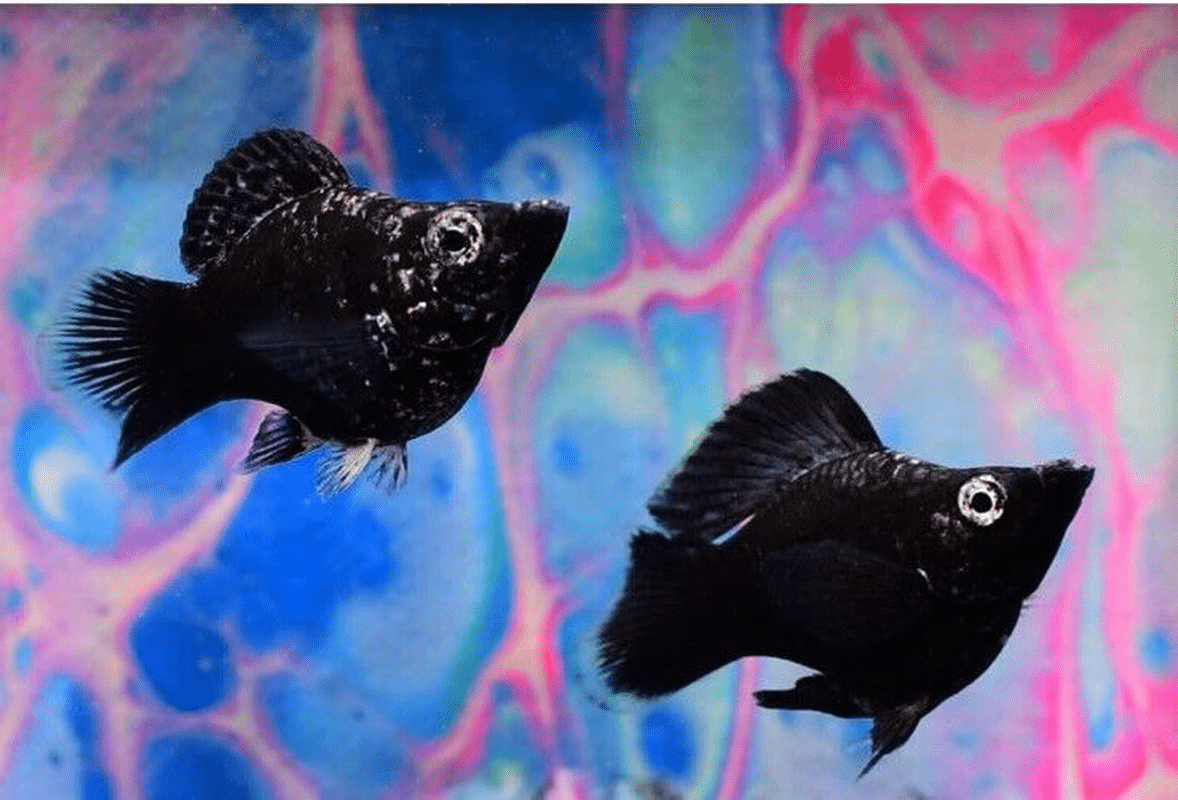
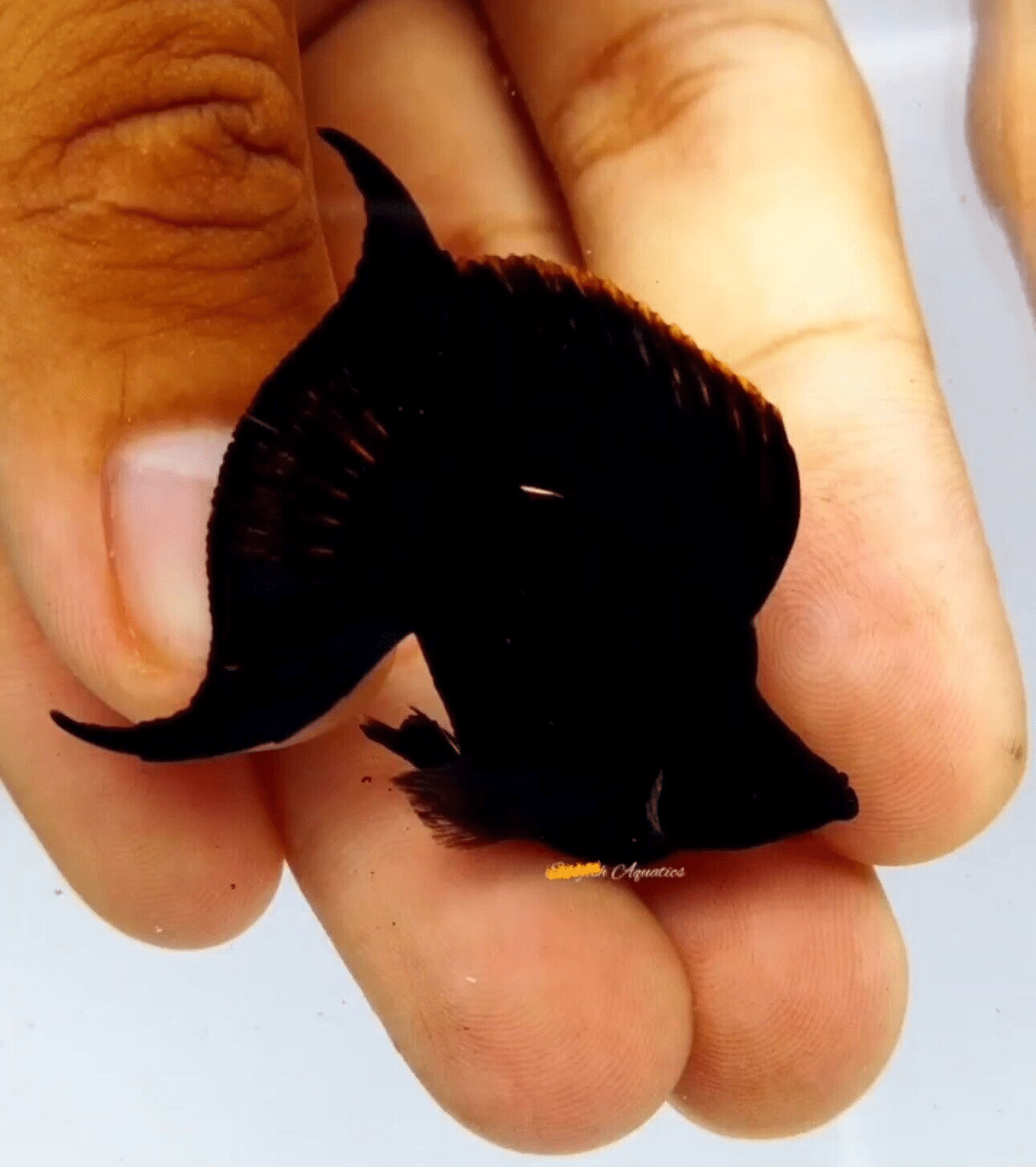
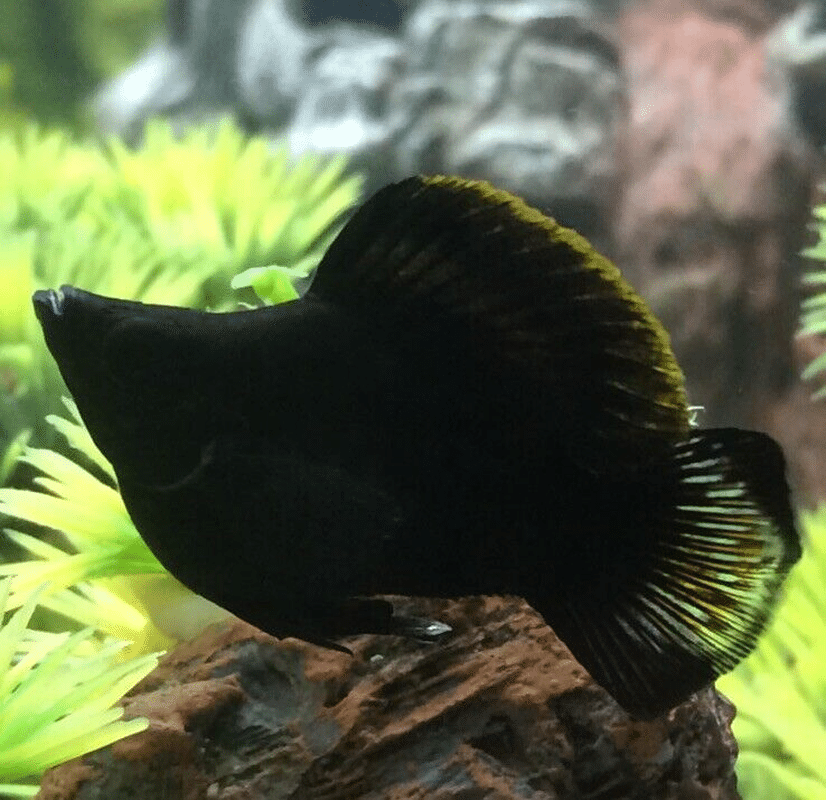
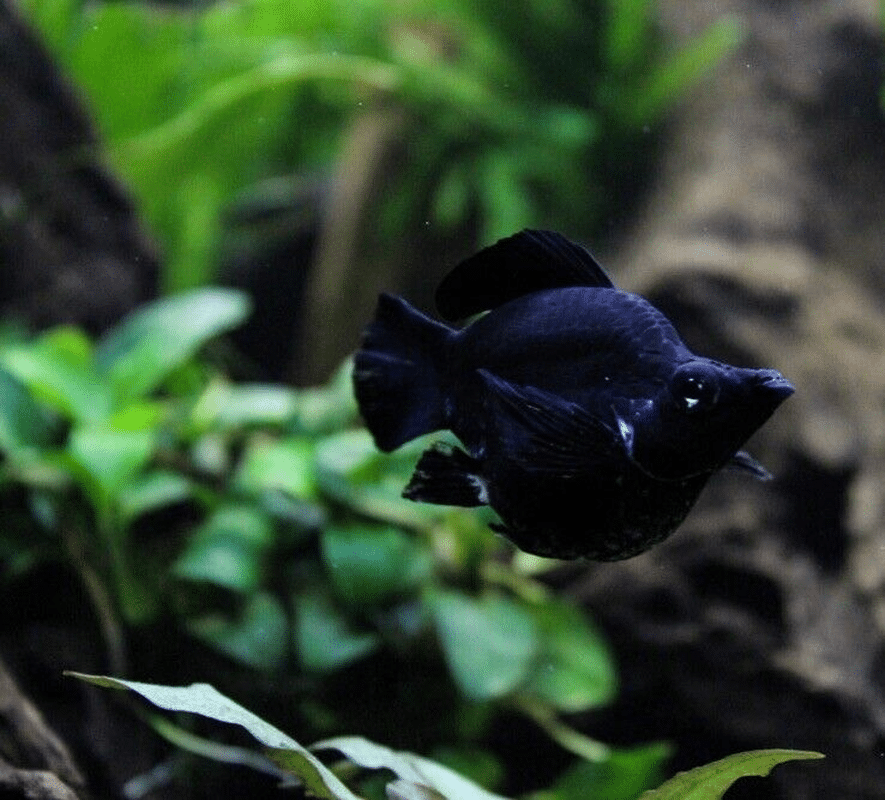


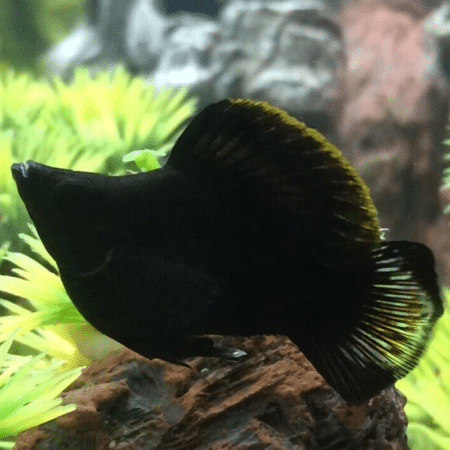
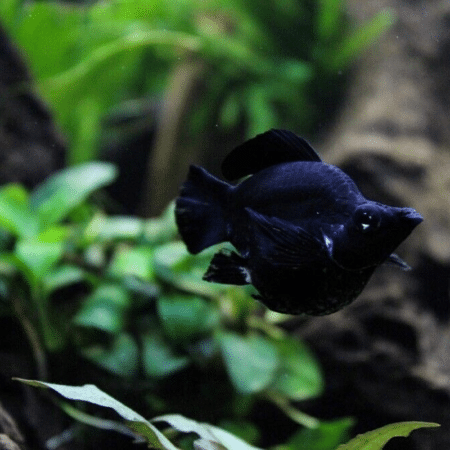










Emily Roberts (verified owner) –
I recently purchased a mix of male and female Black Balloon Mollies, and I couldn’t be happier! These little Poecilia Latipinna beauties arrived just a week ago, and they instantly brought life to my aquarium. Their vibrant colors and unique balloon shape make them stand out, and they swim gracefully, showcasing their playful nature. After a few days in my tank, I noticed them settling in beautifully—no signs of stress at all, which speaks volumes about their health upon arrival. I’ve kept various types of molly fish before, but I can genuinely say these are some of the most vibrant and lively ones I’ve encountered. Compared to other suppliers, the quality here is exceptional; they seem well cared for and arrived in excellent condition. I recommend these Mollies for both seasoned aquarists and beginners alike—they add such charm to a community tank! Just be sure to have plenty of hiding spots, as they do love to explore. I’ll definitely be back for more!